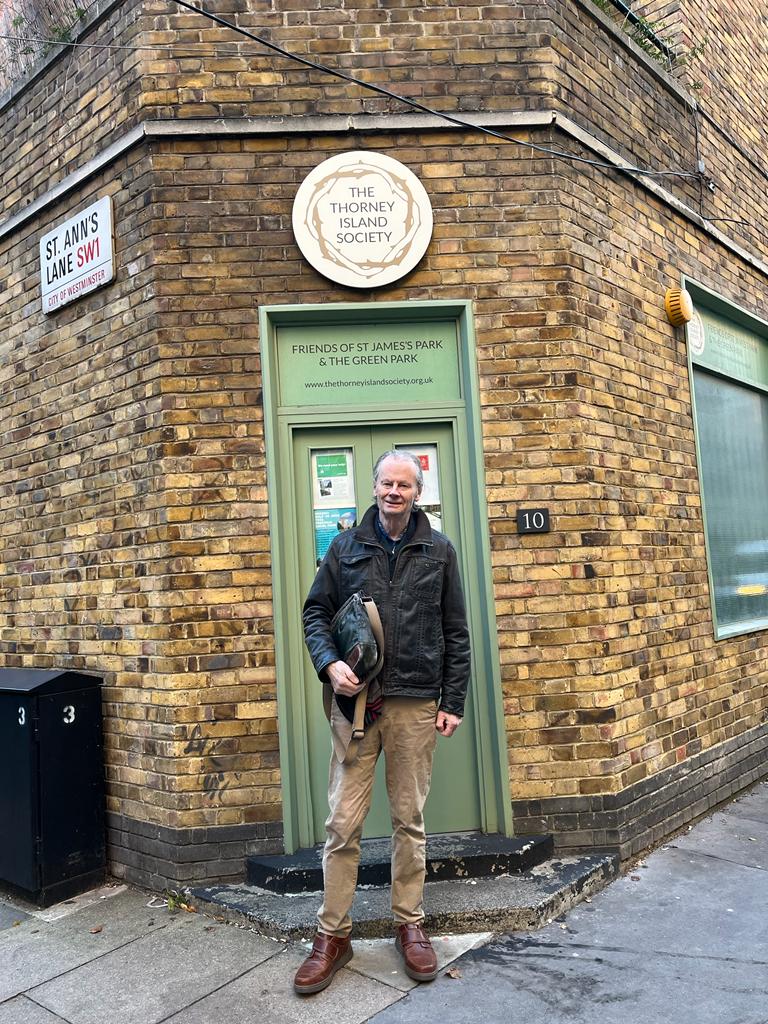Welcome to Thorney Island, a London landmark you may never have known existed
4 min read
Many are surprised to learn that Westminster sits on an ancient island in the Thames. Sophie Church hears from a Thorney Island Society member about the area’s unique history
“As members of the Thorney Island Society, we were invited to Parliament to see the Speaker’s private residence, where an official House of Commons guide took us round. Halfway through he took me aside and said, ‘I hope you don’t mind me asking, but where exactly is Thorney Island?’ I pointed to the ground and said: ‘You’re standing on it.’”
The idea that there is an island in the middle of London is difficult for some people to understand, says Victor Keegan, who has been a member of the Thorney Island Society for almost 15 years. But if you were to peel away layers of concrete, bricks and mortar from the area surrounding the Palace of Westminster, you would find evidence of an ancient river – the Tyburn – flowing into the Thames, creating Thorney Island in the process.
Given the existence of Thorney Island was known about long before the Saxon period, its exact boundaries have often been contested. However, it is generally believed that the Tyburn rises in the Hampstead hills, flows under Mayfair and Green Park, and splits on reaching Buckingham Palace; with one channel flowing into the Thames at Vauxhall Bridge and the other swerving into the Thames just before Downing Street meets Whitehall.
Henry VIII had a palace on Thorney Island that was bigger than the Palace of Versailles, and much uglier
Although London is home to more than one lost river, Keegan says the few acres that Thorney Island covers is particularly special, being “absolutely drenched in history”. For example, Westminster Abbey has hosted the coronations of all but two monarchs since William the Conqueror. It is also indelibly linked to parliamentary life. “When they came to change some of the beams in the abbey’s roof in the early 20th century, the man whose family produced the original oak from forests in Sussex, George Courthope, provided the wood,” Keegan says. “He eventually became the Conservative MP for Rye, and revealed in Westminster that the replacement wood was over 600 years old – nearly as old as the abbey itself!”
However, some of Thorney Island’s historical sites have been lost over time. “Many people are shocked to hear that Henry VIII lived in a palace on Thorney Island that was bigger than the Palace of Versailles, and much uglier,” says Keegan. The Palace of Whitehall was the main residence of English monarchs from 1530 until 1698, when it was destroyed by fire. Banqueting House was the only part of the original building to survive the flames, though remains of the king’s tennis court can still be found north of Parliament Square at 70 Whitehall.
 Victor Keegan
Victor Keegan
While some may find it difficult imagining a titanic Tudor palace on the banks of the Thames, or the island upon which it once stood, Keegan suggests that opening up parts of the Tyburn to the public is “by no means a dead subject.” He has been speaking to the Westminster Business Unit, which is considering proposals to create accessible walkways. As part of plans to open up King’s Scholars’ Passage, where boys from Westminster School used to bathe by the Tyburn, Keegan suggested glassing over a section of walkway so members of the public could view the ancient river below. “It would probably be very expensive, but it would be such a joy to see water flowing,” he says.
Revealing more of London’s hidden history will be vital to attracting more tourists to the United Kingdom, Keegan suggests. “London is still regarded by many people as one of if not the most interesting cities in the world, so opening up our history will increase our appeal.”
